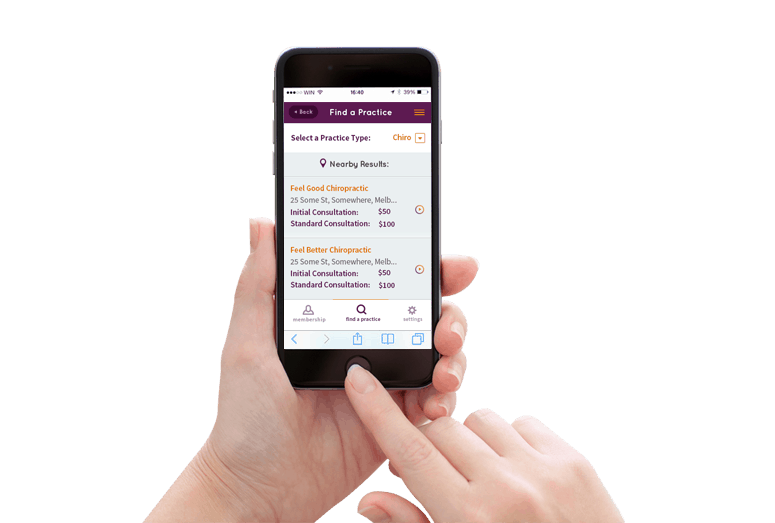Communication has always been key, but never has that phrase rung truer than in the middle of a global pandemic. Retailers are being faced with a rapidly evolving set of challenges and threats to their livelihood, with many being forced to close their physical operations entirely.
The problem is, unless retailers can continue to communicate to their customers effectively, efficiently, and calmly throughout the pandemic, they risk putting themselves in an even worse situation than they’re already in.
As a communications professional, I’ve seen first-hand how retailers are failing to update their clients, customers and suppliers proactively throughout these challenging times. Retailers need to be constantly reassuring people about their hygiene protocols, processes, and changes to their service – but in a lot of cases, it simply isn’t happening
Respond, reassure, reconnect
Unfortunately, many retailers are still failing to properly communicate how their service will be affected by the pandemic. Having a small strip along the top of your site that says “Deliveries may experience delays” simply isn’t good enough. Consumers need to know how long those delays might be, why they might be occurring, and when they can expect things to return to normal.
And it’s not just about delivery times; retailers need to consider a whole new element to their logistics: delivery safety. Consider, for example, a customer ordering a product online from outside of their state. Retailers can’t avoid the fact that many customers are going to be concerned about that product being contaminated with Covid-19. Even if you know their worries are completely unfounded, that’s not an excuse to ignore their concerns.
Woolworths, Uber Eats, and others have been offering no-contact delivery options for months now. More retailers need to start upping their game and offering this as standard.
Even if you can’t answer every single one of your customers’ questions, you at least need to make it clear that you’re trying your very best to respond to them as thoroughly as possible. Where you are unable to share information, speak creatively and honestly. You might be overwhelmed by the crisis, but any response is better than stonewalling.

That being said, if the only thing you’re communicating is that your team is now working from home and washing their hands a lot more, then it’s probably not worth speaking out. How many unwanted Covid-19 emails have been flooding your inbox as of late? Don’t become one of them.
Avoid blanket emails to your entire email list that simply tell people that you’re still “open for business” and “here for you during this difficult time”. Customers can see straight through these messages, and won’t appreciate them. Instead, make sure your messaging is helpful, to the point, and responds to a customer’s specific questions – ideally before they even have to ask.
Instead of firing blanket messages to everyone on your mailing list, it’s critical to put a specific plan in place for different stakeholders. It might sound obvious, but the information you’ll be communicating to customers will be very different to that which you’ll communicate to suppliers. It’ll certainly be different from the messaging you’ll create for your staff, the media, and your competitors.
Talk about cleaning
If you’re an in-store retailer, you need to be communicating all the deep-cleaning efforts you’re putting in, whether your hours have changed at all, and whether your product offering has been affected. You need to constantly be thinking: how can I further reassure my customer that our store is safe to visit? What more could I be doing?
Make your entry requirements clear, too: do customers have to wear a mask to enter your store? Will you provide masks to customers who don’t have them? Is there a time limit for visiting your store? Are you switching to contactless payments only? These are the things that will make it easier for customers to do business with you. Making these changes known early not only reduces confusion or disappointment when a customer is unprepared, but they also reassure customers who would have hesitated to visit your store without those precautions.
The correct Covid-safe protocols need to be followed even on social media. Social distancing measures remain imperative for any business, both for the safety of staff and to avoid making headlines for all the wrong reasons. As a PR professional, it drives me crazy when I see recent photos and video footage being shared online featuring members of a business or organisation who are not social distancing.
Businesses need to lead by example, and demonstrate that they’re keeping both their staff and external stakeholders safe. Ultimately, it’s about showing a respect for correct procedure, and taking the risks of the pandemic seriously. You might even want to consider not using old photos that very clearly portray people not observing social distancing, to avoid misperceptions.
When a crisis hits
If your business is unfortunate enough to be hit with a case of coronavirus, there are several steps you need to take immediately. It’s easy to underestimate how fast these kinds of crises can accelerate, and staying silent is never an option – unless you want your business’s Google results to be filled with coronavirus headlines for evermore.

What are some of the biggest customer questions and concerns you anticipate in relation to the crisis? Get on the front foot and answer these as quickly as possible. If there’s a way to answer them before they’ve even been asked, even better.
Don’t leave room for concerns to flourish, because in a crisis it’s easy for people to assume the worst. Where there’s potential for concerns relating to your business and its ability to survive the crisis, anticipate those and address them before they’re even asked. Communicate quickly, often, and with a tone of reassurance and calm.
Testing positive
If your business becomes the source of a coronavirus cluster, the media will always find ways to contact you. Make sure the right person is on the other end of the call when they do. Prepare your team ahead of time so that if a journalist calls, everyone knows who they need to be transferred to. Ensure every single member of staff is clear on how to tackle the media without accidentally giving an interview or letting the wrong information slip.
Any attempt to limit access to journalists will simply get them offside and cause unwanted suspicion. Share as much information as you can, and ensure that what you share is helpful to their story. If you can achieve this in a warm, friendly manner, then you’ll get a far better result.
And remember: even if the unfortunate case has absolutely nothing to do with your hygiene standards, customers are naturally going to think that it does – unless you tell them otherwise.
Retailers need to communicate that after closing for a deep clean, they are the safest they have ever been. Unfortunately, retailers aren’t communicating this as well as they could. Share a video of the deep clean in action on social media, talk through the precautions that are being taken. In fact, photos and videos of hygiene practices should be shown regularly even without being faced with a positive case.

Controlling the narrative
By implementing precautions that go above and beyond, you are able to control your own narrative, instead of being at the whim of government leaders. It means you can reassure your customers of the steps you are taking, and make it easier for people to feel safe about coming back.
The key here is to not toe the line, but go the extra mile. Don’t give the impression that you are just trying to keep up (even if that is how you feel). Exude confidence by proactively doing more than required and communicate this in a wide variety of ways.
This is not business as usual, and there’s no denying that retailers are facing a tough time over the next couple of months. But get your communications strategy right, and you’ll have a much better chance of weathering the storm.
This blog post first featured on InsideRetail.com.au and is written by Phoebe Netto, found of Pure Public Relations.

